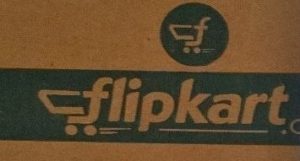What Is Flipkart’s Game Plan?

Photo Credit: vignesh kumar/Flickr.com
Last month, Walmart completed its $16 billion acquisition of a 77% stake in India’s leading online marketplace Flipkart. Since the acquisition was announced in May, Flipkart has been rolling up companies and has also launched a loyalty program to up its game against Amazon. Let’s take a closer look.
Flipkart’s Recent Acquisitions
In August, Flipkart bought AI startup Liv.ai for an undisclosed sum. Founded in 2015 by former IIT graduates Subodh Kumar, Sanjeev Kumar, and Kishore Mundraan, Liv.ai has built a platform that converts speech to text in Hindi, Bengali, Punjabi, Marathi, Gujarati, Kannada, Tamil, Telugu and Malayalam, among others. Liv.ai had raised seed funding from Astrac Ventures.
Flipkart plans to invest heavily in areas such as artificial intelligence and machine learning to boost its offerings. Last week, Flipkart invested in robotic automation start-up GreyOrange in a Series C funding round of $140 million. Flipkart had been working closely with GreyOrange over the past few years to improve its warehousing capabilities. GreyOrange competes directly with Amazon’s Kiva Systems in automating massive e-commerce warehouses. Amazon had bought robotics company Kiva for $775 million in 2012.
Flipkart’s Private Label Strategy
Flipkart launched its private label SmartBuy in December 2016 to improve its margins. This year, it expects its private label strategy to play a big role in the categories of large appliances, furniture, and electronic accessories. Currently, private labels account for about 15% of all sales in their respective product lines.
For fiscal 2017, Flipkart reported revenue growth of 15% to $2.2 billion (INR 15,813 crore. Losses in 2017 were down 55% to $34 million (INR 244 crore). Smartphones account for about 50% of Flipkart’s gross merchandise value (GMV) while fashion accounts for about 26%.
A major boost for its private label strategy comes from its fashion arm Myntra. In September 2017, Myntra’s private label business turned operationally profitable. Myntra has 13 private labels including brands Roadster, Dressberry, Anouk, and HRX that account for 25% of its overall business. It expects the private label business to account for 35%-40% and lead to double-digit operating profit margin by 2020. For fiscal 2017, Myntra had revenue of $273 million (INR 2000 crore), up 94% from $143 million (INR 1031 crore) a year ago. Losses reduced 25% to $91 million (INR 655 crore).
Flipkart’s Loyalty Program
According to RedSeer, Flipkart, which was founded in 2007, had a 46% share in 2018. Amazon, which entered the Indian market in 2013, had a 30% share. Within just five years, Amazon has managed to capture a sizeable share of the market and Flipkart has had a tough time maintaining its lead. A prime factor for Amazon’s success is its Prime membership program. According to RedSeer, about 35% of Amazon’s orders are coming from Prime members who pay INR 999 ($15) annually or INR 129 ($2) monthly. Further, about 22% of the Prime members have not shopped on other platforms after subscribing to the service.
To compete with Amazon Prime membership, Flipkart on August 15 launched a customer loyalty program called Flipkart Plus. There is no subscription fee but users need to shop for at least INR 12,500 or earn 50 points to become a member of the program. Flipkart Plus offers free delivery, exclusive access during a sale, and priority customer service. It also offers one Plus Coin for every purchase worth INR 250 that can be exchanged on third-party sites such as Café Coffee Day, Zomato, MakeMyTrip, and BookMyShow.
Amazon Prime, on the other hand, offers its members free fast delivery, exclusive access to top deals and coupons, free video content, and ad-free music content.
What do you, as shoppers, think about these moves? What is Flipkart’s USP? Are you able to stay loyal to Flipkart? What is more attractive in Amazon or other online marketplaces?
A few months back, while analyzing the impact of the Flipkart-Walmart deal, I had hoped that we will see more of Sachin as an investor and an entrepreneur. True to my hopes, he is reportedly planning to raise $1 billion for a startup-focused fund in which he will put in 40%. Click here to read my analysis on the impact of the Flipkart-Walmart deal on Indian E-Commerce Startups.



